

This year the Japanese Classic Car Show Association held their 13th annual JCCS show at the Queen Mary Events Park in Long Beach, California. The exhibition has been entertaining spectators around the world since 2005. Like many of the vintage cars attending the event, the show has also grown with the rebirth of old school car aficionados, aged to perfection like a bottle of fine wine.

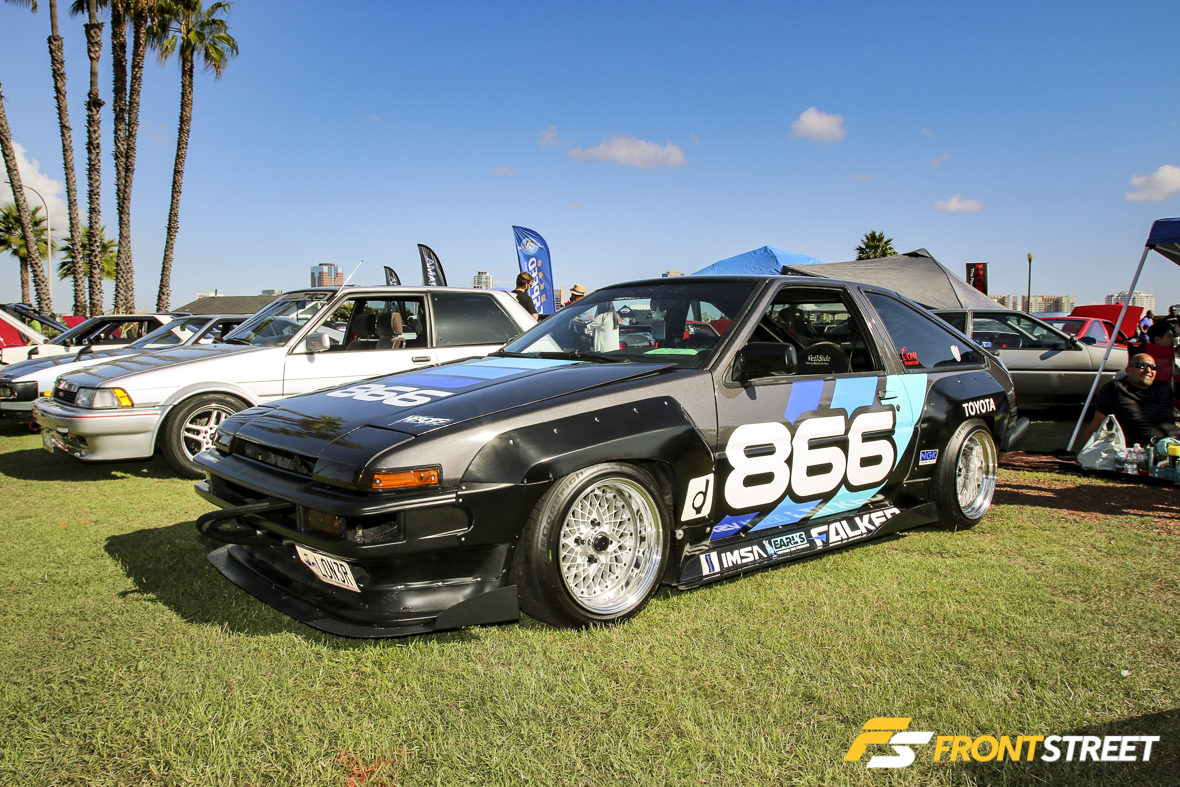
Starting with ‘60s and ‘70s Japanese Classics, while also including ‘80s and early-‘90s era vehicles classified under Neo-Classics, and everything in between. There was something for everyone to enjoy and reminisce about the magic eras of import car culture.


This year marks the golden anniversary of the Datsun 510, celebrating 50 years since the first model rolled out from production. To celebrate the occasion, JCCS teamed up with Matchbox to raffle off 40 limited-edition 50th Anniversary models.

JCCS featured the addition of Neo Classic models—an era of Japanese manufactured vehicles made between 1986 and 1995 only. The JCCS association decided to integrate Neo Classic cars into the show due to the canceling of another event for this year named Street Neo Classics Vol. 3, as they are currently in works to lockdown new venue. Vehicle selection and display space was extremely limited, holding just 20 cars.


Among the accepted Neo Classic cars was this street/race prepped ’88 Honda CRX owned by Carlos Garcia. He opted for some tasteful modifications to his ride, which included sourcing an entire EF8 JDM SiR front clip. This not only granted him the Japanese body panels, but also the B16A2 engine. Additional modifications include EF8 taillights, J’s Racing front lip, and Spoon Sports mirrors. Spoon Sports brake calipers can be found peeking from under a set of Rays Volk Racing TE37 wheels wrapped in Toyo R888 tires. Suspension upgrades consist of Eibach Multi-Pro R2 coilovers, ST sway bars, Innovate traction bar, ITR rear control arm, and Hardrace control arms and toe/camber kit.

The interior was all business as Garcia sits firmly planted in a Bride Gias III Touring seat and protected by an Autopower roll cage. The weekend’s JCCS show served as a temporary resting ground for both vehicle and owner, as he was preparing to compete in the Super Street FF Battle taking place at Willow Springs Raceway the following week.


Regardless of whether you love them or hate them, these Mugen CF-48 wheels are rare birds. The odd ‘80s wheel design resembles that of a fan clutch. They are in high demand among the JDM Honda crowd, and are currently fetching upwards of $2,000 dollars for a set.

This Nissan 240SX is often mistaken for a Dodge Challenger on steroids as the front end does share some striking similarities but by no means is this car American muscle. This Nissan is outfitted with a Rocket Bunny Boss14 body kit, which was designed as a throwback to the old Datsun family of vehicles.


Bryan Thompson displayed his 1981 Honda City R with only 23,000 original miles, along with his NCZ50 Motocompo folding scooter. Also known as a “Trunk Bike”, this portable two-stroke motorbike was designed exclusively by Honda to fit inside the rear cargo area of the City.

These Super Star Racing Air Stage wheels are another example of throwback old school wheels. If you haven’t noticed by now, the “fan blade” or “clutch style” wheels were popular designs among JDM manufactures in the early ‘80s era. The intricate designs of these wheels are a budding reality of how simplistic and cookie cutter todays wheels have become in comparison to their counterparts.

Toyota USA headquarters located in Torrance, California finalized their move to their new Plano, Texas location earlier this summer. With the move came the necessity to also relocate the 45,000 sq. ft. Toyota automobile museum, which showcased more than 55 years of U.S. Toyota heritage. That history ranged from a ’59 Toyopet Crown—one of Toyotas first vehicles to be sold in the US—to the more recent Scion FR-S, which was eventually rebranded as the Toyota 86. Even the Lexus 2054, a concept car designed for the 2002 Steven Spielberg film Minority Report was housed in the collection. On Sept 22nd, JCCS offered one final tour though the museum before staff began shipping the cars. Those fortunate enough to attend JCCS were able to bask in the glory of Toyota history for one last time in California, before these classics were carted off to their new home.

Among the Toyota collection exhibited at the show was the infamous Toyota Celica “IMSA Camel GT”. Easily recognizable by its vintage red/orange/yellow Toyota Racing livery on white paint, this 1980s TRD IMSA Toyota Celica was built and raced by Dan Gurney’s All-American Racers and campaigned in the ’83 IMSA Camel GT series in the GTU class.
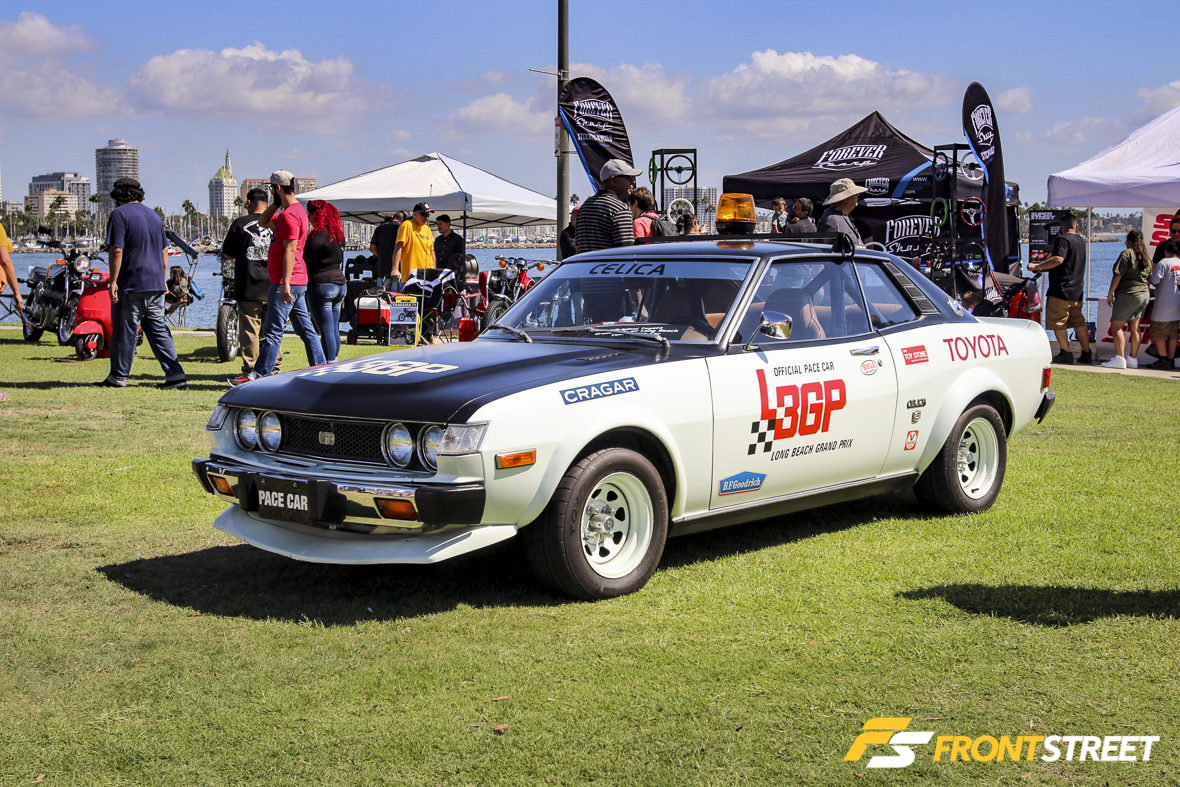
Toyota has been a long time sponsor of the Long Beach of Grand Prix and various model Celicas have served as pace cars from 1975 until 2004 when the Solara finally replaced the model.


Anyone down for a beer run? This ’87 Toyota van was purchased brand new and has remained in the same family for the past 30 years executing countless trips to the grocery store and weekend excursions. The owner stated that it was stolen and recovered, and even with over 255K miles on the odometer, they decided to restore it back to its former glory. More importantly, we were determined throughout the day to find a tap for those kegs of Asahi beer!
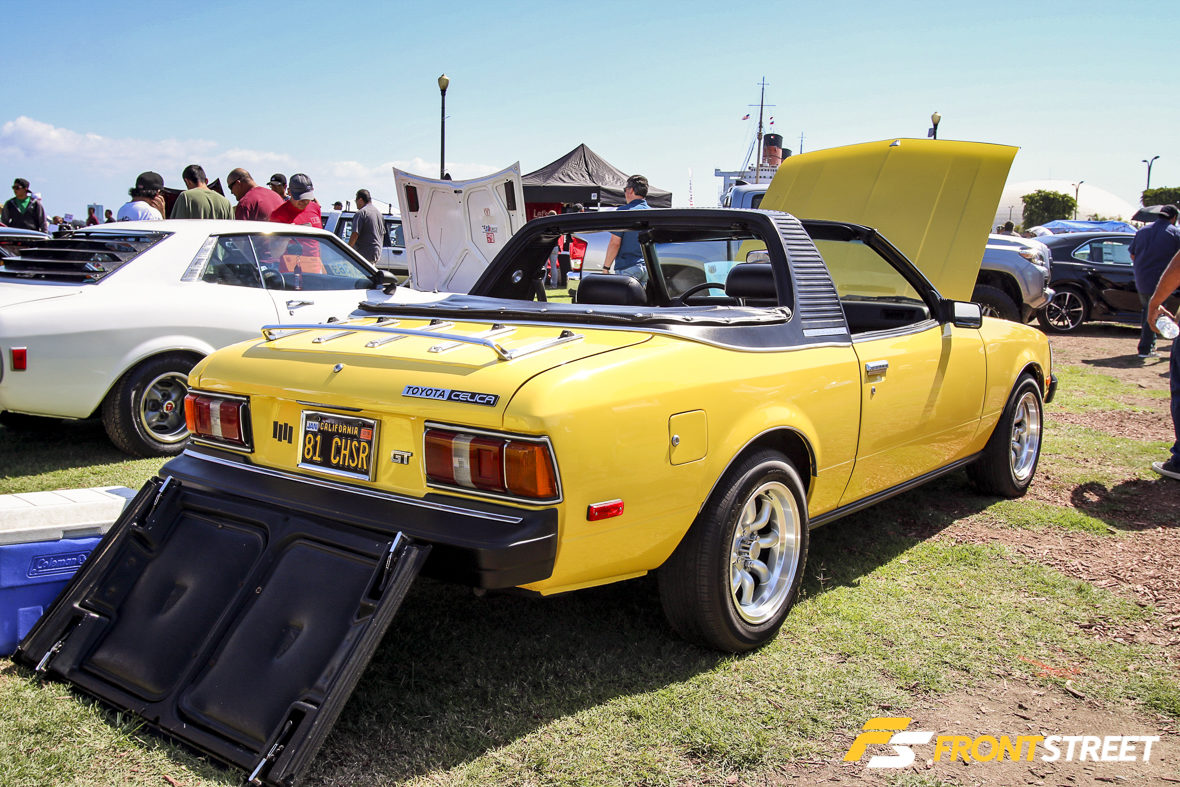
Here’s an interesting ’81 Celica car that’s known as the Sunchaser. The Sunchaser was a special convertible conversion offered by Toyota from ’79 to ’81. Toyota commissioned the Griffith Company to cut the hardtop roof and make any necessary modifications to install the electric top. Approximately 2,000 of these convertibles made it through production. If this vehicle isn’t your cup of tea, well, we’re not blaming you. This is definitely a face—or in this case a car—that only a mother can love.

Roy De Guzman spending time on polishing his Hot Wheels inspired Hakosuka Skyline with a set of newly installed Work Equip 40 wheels.



In the ‘90s, Acura’s Legend was their flagship vehicle that signified both refinement and luxury. This ’94 Legend GS has been kept in immaculate condition as indicated by both the exterior and interior. The owner even retained the original window sticker for the car from 23 years ago with $41,085 listed at the bottom. To give you an idea of how much $40K was worth back in the day, a quick calculation to readjust current inflation prices would bring the purchase of this vehicle to an inflation of 65.7 percent or $68,000. That’s a lot of cash!

Special guest judges at this year’s event included Shoji Inoue, owner of Japans legendary tuner shop Star Road and his staff members. Kazuhiro Furukawa of Osaka JDM and his Honda specialist team also made the long trip to judge the category for Best Honda.


Paul Bischoff’s been busy converting his ’71 Skyline KGC10 GTX into a modern day GTR replica machine. Under the hood sits a RB26DETT engine converted to a single Precision 6266 turbocharger setup with 1,000cc injectors and managed with a Microtech ECU.


The interior consists of both old school and new with the integration of Bride racing buckets and a RacePak cluster, while a set of Watanabe wheels are tightly wrapped with Toyo Proxes R888 tires.


Sitting just to the right of Bischoff’s GTX was a Kenmeri GT coupe. The ’73 KGC110 owned by Patrick Soliman has undergone some serious modifications from top to bottom. The engine bay now houses a RB26DETT engine, which was pulled from an R33-chassis GTR and upgraded with a Precision 6262 ball bearing turbocharger. Precision 46mm wastegate, 50mm TiAL BOV, HKS velocity stack, 850cc injectors, and a Microtec LT-16 ECU provide a serious boot in horsepower numbers.

The exterior body has been massaged with a Works wide body and completed with a GTR front grill. Tein camber plates with custom front and rear coilovers, Techno Toy Tuning trailing arms and Eibach springs allow a set of ultra rare Riverside “Super River” wheels with custom barrels pushing the size to 15×10-inch front and 15×11.5-inch rears, to sit perfectly flush within the fenders. Soliman took home second prize in the Best ‘70s Skyline class.



This first-generation RA29 Celica was flossing a set of Equip 40 wheels introduced by Work Wheels earlier this year at the Tokyo Auto Salon. Inside the Toyota’s candy purple engine bay, a high-compression Beams engine with AE101 ITBs was attached to the mounts.

Spotting an Isuzu on the streets today is pretty uncommon, but to witness an Isuzu 117 coupe on the open road is truly a rare experience. The Isuzu 117 Gran Turismo began production in 1969 and was among the first Japanese cars integrated with fuel injection. Designed by Italian stylist Giorgetto Giugiaro, the 117’s stylings are very Italian and feature many similarities to the Fiat 130 when viewed from the front.

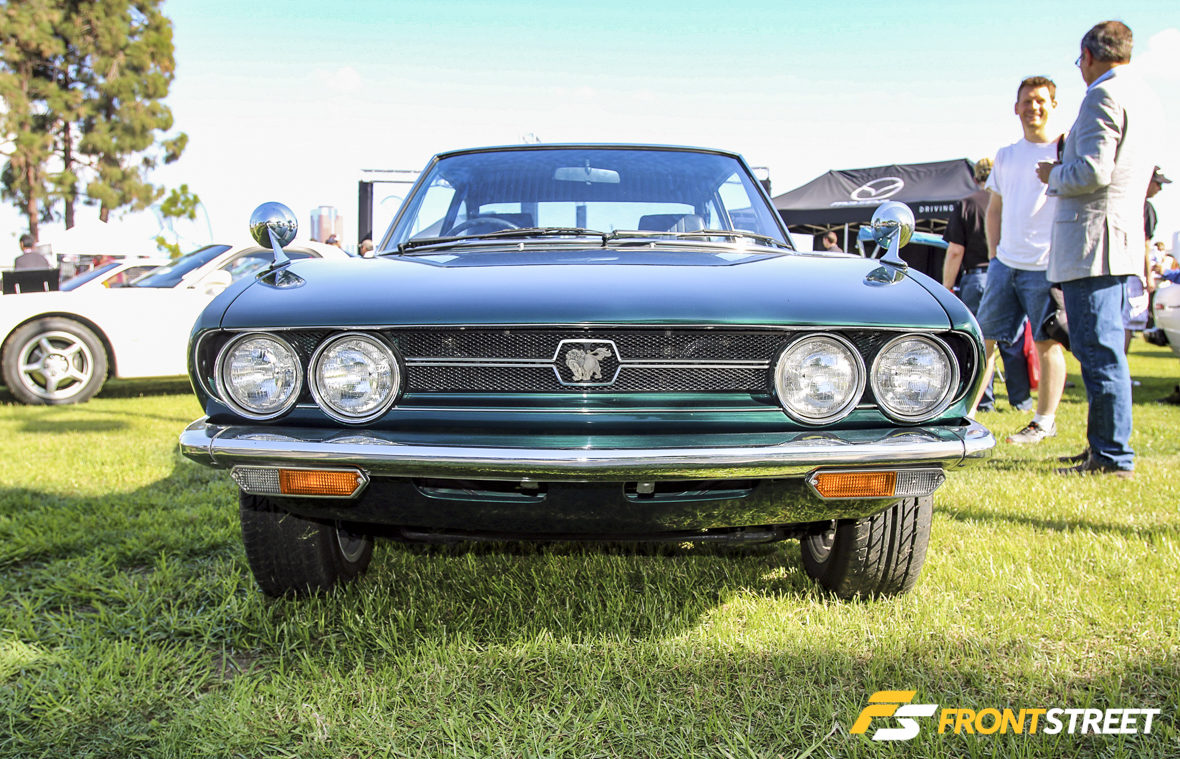
Records show that only 86,000 of these Giugiaro-designed coupes were ever built, with none of them ever officially making their way to the United States. The owner of this Isuzu purchased his rare ride from Europe. The vehicle was transported all the way from his hometown in Ohio for this particular show.

Second place in the Best Mitsubishi category went to Rodel Soto and his ’85 Delica L300 diesel. The air snorkel, brush guard and auxiliary lights come equipped as factory options for this JDM-spec 4×4 van.

Last year, it was Toyota that represented at JCCS with an onslaught of historic vehicles but this year the tides turned, and it was Mazda who came out swinging. 2017 marks a milestone year for Mazda as they commemorate the 50th anniversary of the rotary-engine vehicles. Among their lineup of cars, Racing Beat of Signal Hill, California also joined in by bringing a number of their memorable rotary powered vehicles.
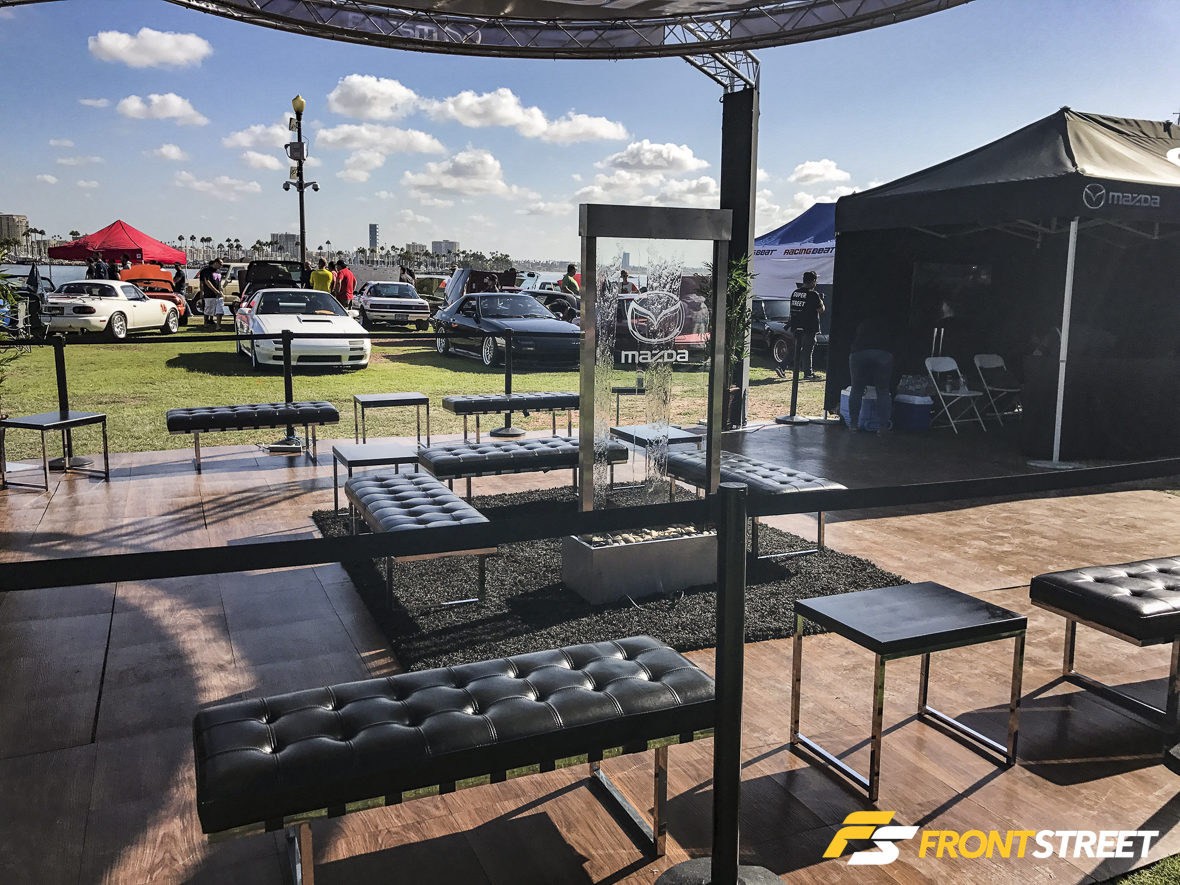
Mazda even provided their VIP’s with a custom tranquil waterfall and leather seats to lounge on while sipping on some complementary drinks. Your move Honda, Nissan, and Toyota.


The 1989 767B is one of Mazda’s most recognized race craft throughout their lineage of cars. Second only to it’s brother, the 787B, which won the 1991 24 Hours of Le Mans race. The Mazda 767B needs little introduction, with only two built and tested in the IMSA 24 Hours of Daytona, where it finished in 5th place. Mazda also campaigned both vehicles in Le Mans later that same year in 1989, and placed 7th and 9th overall.


I constantly remind myself that I should have kept my RX-3 back in high school. It still haunts me to this day, and became painfully relevant when I saw this ’72 example, which was built and raced by Newport Beach Architect George Koteles from ’79 to ’82 in the IMSA champion Spark Plug RS (Radial Sedan) series. Equipped with a 12A Bridgeport engine, the Mazda spent a majority of its racing campaign on the West Coast. Here’s an interesting fact on the Beck’s Bier livery. Koteles proposed a sponsorship to the local Beck’s distributor. A total of 10 cases of beer and $300 dollars were exchanged in trade for the Beck’s Bier livery placed on the vehicle.


The infamous 500hp FC3S RX-7 Bonneville Land Speed record car was one of many Racing Beat vehicles on display. This is the RX-7 that Don Sherman drove back in 1986, which shattered the existing land speed record of 201.241 mph by over 37 mph.


According to Racing Beat, this RX-7 still holds the land speed record of 238.4 mph in the E/BGT class, almost 31 years after breaking the record.


It was hard to miss this ’80s themed Mazda B2000 pickup sitting just outside the Racing Beat booth. Dubbed California Haulin’, this unique piece of rotary history was built by Racing Beat as a collaboration project with Mazda USA to develop a custom concept truck that delivered a “Totally Rad” California beach theme.
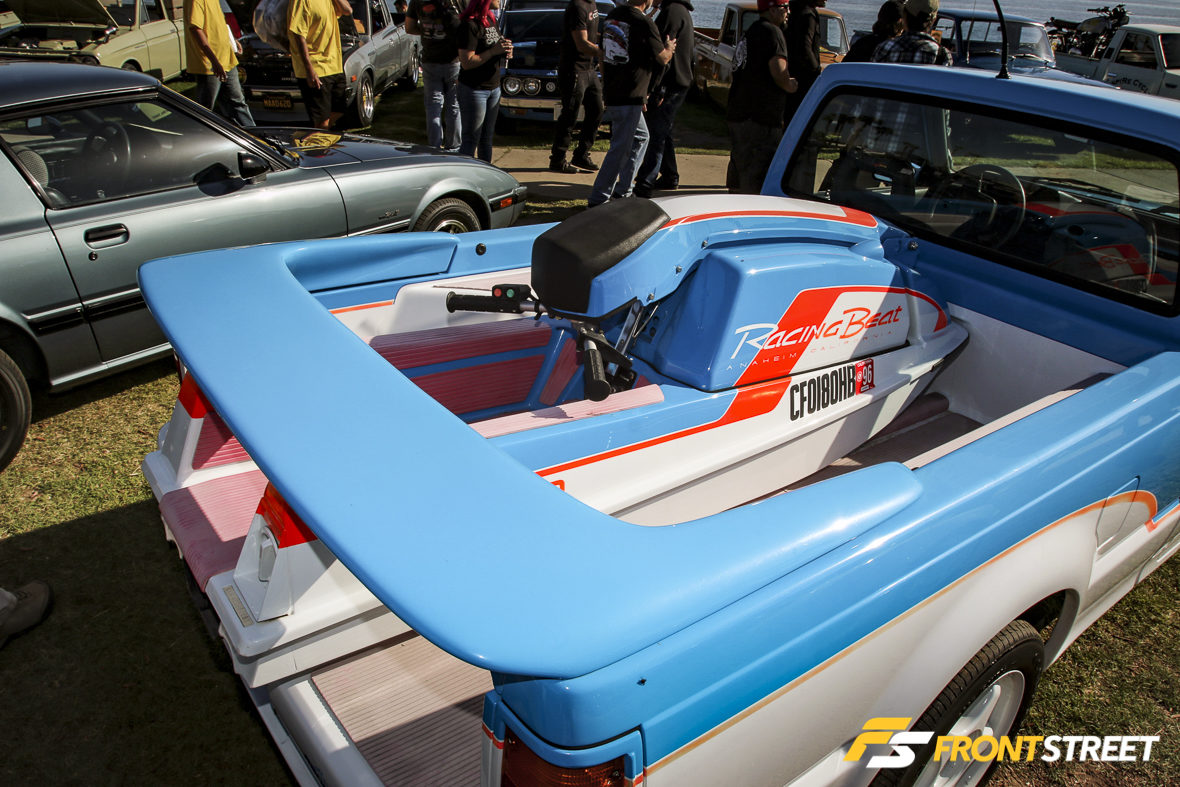
The 1989 Mazda B2000 pickup was modified using a 13B turbo engine while the bed was designed specifically to house a watercraft to promote how versatile it was to load and unload cargo.


We found this first-generation RX-7 tucked behind the Racing Beat booth and immediately recognized the widened stance, complements of a Mariah flared body kit. This RX-7 was kept in meticulous condition along with its era correct HRE wheels.

Under the hood, the original engine was replaced with a 13B second-generation Turbo II power plant and fortified with a turbo upgrade, HKS blow off valve and aftermarket external coils packs.



The Nissan Figaro was one of many unique vehicles that the U.S. never imported. Marketed solely for Japan, the Figaro was a 2+2 convertible that was introduced in 1989. This unique fixed-convertible consists of a retracting soft top that sits on a railing system. This particular model is a limited edition as indicated by the passenger side basket and cup holder.


Every now and then, performance engineers develop something so phenomenal that it gains instant worldwide recognition. Phenomenal is an understatement when describing the OS Giken TC24-B1Z. In the late ’70s, Osamu Okazaki from OS Giken decided to convert what was then one of Nissan’s most popular engines, an L-Series straight-six engine into a true high performance power plant. Dubbed the OS Giken TC24-B1Z, the engine originated from the TC16, a twin-cam head for the four-cylinder L-series engines found in Datsun Bluebird 510 models.

Built by Z Car Garage in San Jose, CA and debuted at SEMA 2015, this S30 outfitted with the legendary OS Giken TC24-B1Z consists of a 3.3-liter bottom end with an OS Giken DOHC cylinder head that churns out 420 HP at 9,000 rpm and 289 lb-ft of torque at 8,000 rpm in its naturally aspirated form. This is the first North American (LHD) S30 to run the legendary OS Giken TC24-B1Z engine. Now before you rush out the door to purchase this engine setup, just know that it can cost upwards of $30,000. Yes, that’s not a typo. Thirty thousand dollars!


This year’s award for both Farthest Driven and Super Street Magazine recognition was awarded to Tommy Dolormente and his ’81 KP61 Toyota Starlet. Dolormente, a Hawaii native shipped his car to participate at JCCS. His modified Starlet features a slew of parts including a TRD spoiler, custom side skirts KE70 front lip and bumpers, Martelius racing headers and Accuair Vu4 air suspension.

Comprised of original paint, the exterior was wrapped with a Tom’s Racing livery and outfitted with 14-inch SSR Casablanca wheels.


Saul Valencia’s 1972 Datsun 240Z was the talk of the show. Built from the ground up, this restomod beast was outfitted with a custom wide body kit and painted in a candy orange hue. The interior was reupholstered in custom suede and leather before SOS Customz fabricated a custom roll cage and dash tinwork.


Go fast goodies include an LS1 swap shoehorned into the engine bay. A gratuitous front mount intercooler and turbocharger to boot was placed well above the hood line and mated to a 4” side exit exhaust, allowing this Z to portray one menacing look.

What do you get when you combine some “Ganso VIP” culture with modern high horsepower engineering? This MX32 Toyota Cressida pretty much sums it up. “Ganso” means “original,” but not in the sense of “stock.” Instead, it stems from original as in “original gangster”.


The owner decided to combine both style and speed, by throwing a turbocharged straight-six engine into the mix and peppered it with some JDM Thrash Racing Zebra print seats and JDM fender mirrors before finishing it off with some classic SSR MK1 wheels to build one unique ride.


Honda made their presence known at this year’s show and brought out a number of classic cars as well as some of their newer vehicles, which included the Red Bull Global Rallycross Civic.

The 2016 GRC Civic is a far cry from their factory production model as this longitudinally mounted inline 2.0L turbocharged mud slinger delivers 600hp and 630 lb-ft of torque at 8,500 rpm, while being able to click-off 0-60mph in 1.9 seconds. The custom designed Civic coupe body, chassis, and engine package was specially prepared by Olsbergs MSE racing team in collaboration with Honda Performance Development (HPD). The Civic is currently a rookie to the GRC circuit for the 2017 season with only two events currently under its belt.

Megumi Nagata’s 1965 T500 was drawing crowds throughout the day. It’s rare to witness an old school Honda truck, much less a classic ’65. The T500 was the second production truck just behind the T360 produced by Honda with only 10,226 T500s built worldwide. The engine is comprised of a 531cc DOHC with a redline of 9,000 rpm. The high-revving, twin cam, mid-mounted setup is based upon a motorcycle engine. The crankshaft is supported on three roller bearings, and it breathes through dual Mikuni / Solex side draft carburetors.

Todd Kaneko’s infamous Datsun 510 made a special appearance at this year’s show. When Kaneko isn’t tinkering around with his numerous project cars, he’s preoccupied as an engineering manager at Mazda North America.

His ’73 Datsun 510 was built with the mentality of an engineer and implemented a number of parts you find on a motorsports bred racecar.

The Garrett-turbocharged 13B is mated to a RX-7 Turbo II transmission and managed by a MoTec M4 Pro stand-alone ECU. The engine bay reveals plenty of one-off parts and custom fabrication that went into making this Datsun a fan favorite.
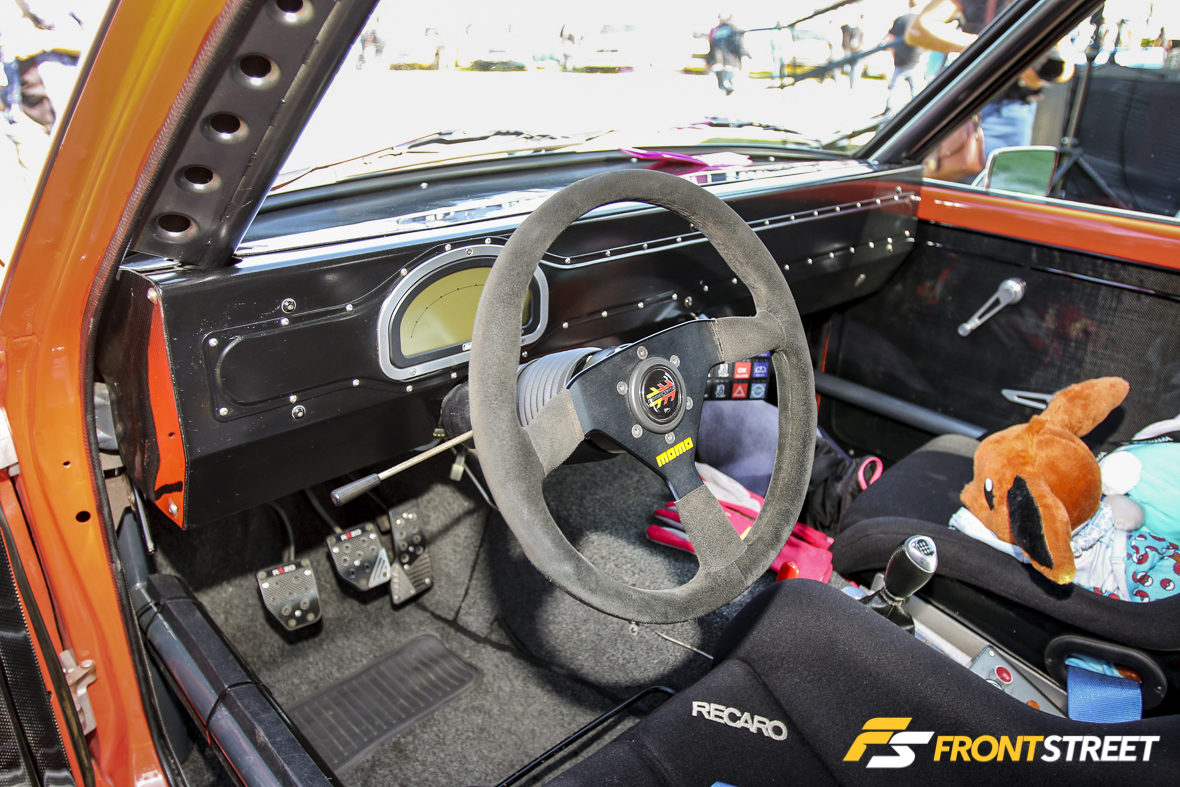

No expenses were spared when Kaneko updated the interior a few months ago. A MoTec dash display and PDM module removed the previous Autometer gauge clutter to simplify the vehicle’s electronics.


If you’re a fan of “old school” Japanese cars, then this is the show you want to attend. If you missed out, be sure to visit their website or Facebook page for future events and extended event coverage.

































































